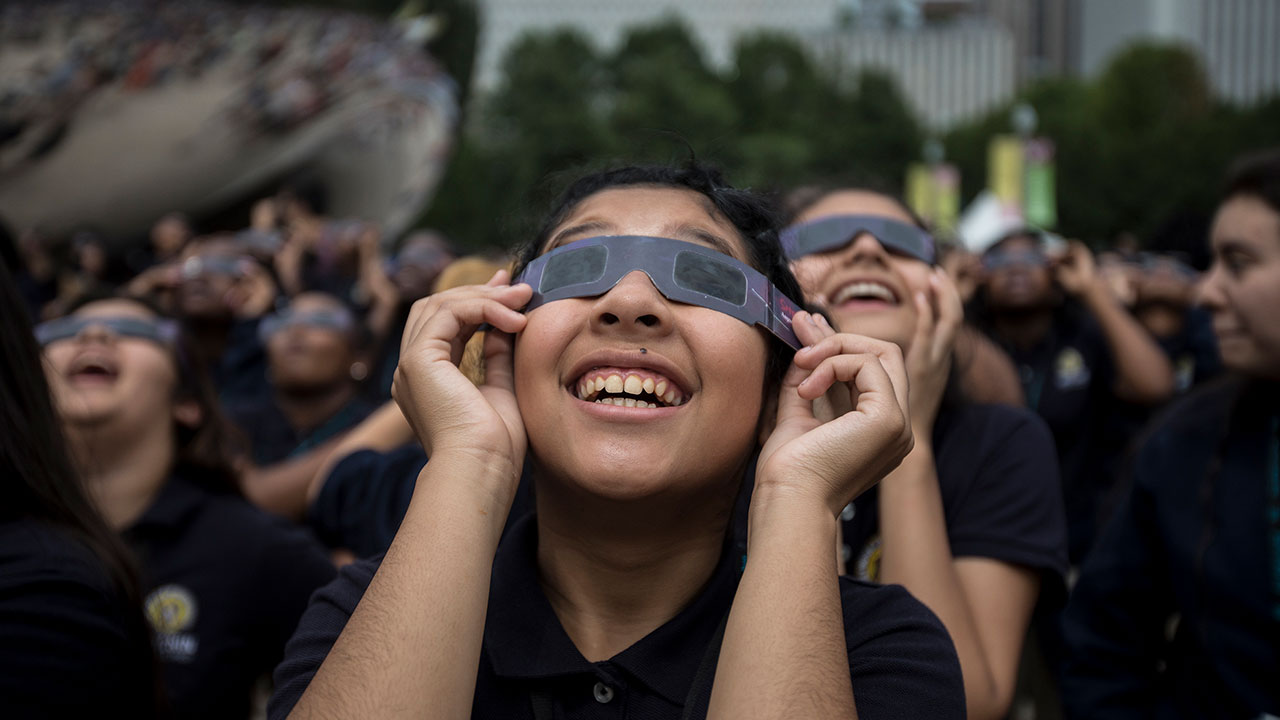Where to get solar eclipse glasses last minute
It may not be too late to get last minute solar eclipse glasses for today, depending on your location.

Today (April 8), the moon will completely block the sun's disk, plunging parts of 15 U.S. states along the eclipse's path of totality into eerie darkness during the daytime. Meanwhile, viewers across the entire contiguous U.S. will be able to see a partial solar eclipse.
To view the partial phases of the eclipse, no matter where you are, you need to use protective eyewear such as solar eclipse glasses. Failure to do so could result in permanent eye damage, according to NASA.
If you still need a pair of certified solar eclipse glasses before the climax of the total solar eclipse in North America today, you may not be out of luck yet.
Where can I buy solar eclipse glasses in person today?
There are many local businesses that may still have solar glasses in stock today.
The American Astronomical Society (AAS) — the agency responsible for certifying that solar eclipse glasses meet safety regulations — has a list of stores that sell certified eclipse glasses. Try calling a store near you to see if any glasses are in stock. Participating stores include:
- Walmart: Solar eclipse glasses, binoculars and apparel
- Lowe's: Solar eclipse glasses in-store
- Target: Discounted ISO-certified solar glasses
- Walmart: Solar glasses, binoculars and filters available
- Staples: Solar eclipse multipack available
- Best Buy: Solar glasses, viewers, telescopes and binoculars
- B&H Photo Video: Binoculars, glasses and telescopes
- Adorama: Solar glasses, filters, binoculars and cameras
- Meijer: Solar eclipse glasses and smartphone filters
- Kroger
- 7-Eleven
- Wegmans
- H-E-B
- Menards
To help avoid counterfeit glasses and scams today, make sure your eclipse glasses include an ISO logo on them to show they meet the international safety standard ISO 12312-2. Check your glasses for any scrapes or rips on the lenses, and try them out using a bright lamp at home before using them to look directly at the sun. You should only be able to see the dimmest speck of light from your lightbulb.
While it's likely too late to order a pair online, many brick-and-mortar businesses may still have eclipse glasses in stock today. In addition, hundreds of libraries and universities across the country have been doling out free pairs of glasses for the last several weeks and may still be able to hook you up.
Get the world’s most fascinating discoveries delivered straight to your inbox.
April 8 solar eclipse: What time does totality start in every state?
Here's everything you need to know about finding certified solar eclipse glasses before the big event this afternoon.
Where can I get free solar eclipse glasses near me?
If snagging a pair of free solar eclipse glasses is your goal, you may be out of luck this time.
Many libraries, universities and certain businesses have been offering free pairs of eclipse glasses for several months now; whether or not they still have any supplies in stock will depend entirely on your location and how close to the path of totality you are.
Try calling your local library branch or university right away to see if they still have any glasses in stock. Check out this map of participating libraries for more info.
Meanwhile, Warby Parker has been offering free eclipse glasses in stores since April 1.
If you are attending a solar eclipse viewing party today, they may have free pairs of glasses in stock. Check your local listings for viewing events near you.
Do I need solar eclipse glasses?
Totality — the moment when the sun is completely blocked by the moon — is the ONLY safe time to view the eclipse with the naked eye. To do so, you MUST be within the path of totality. (These 2024 eclipse maps will tell you if you are.)
To view the partial phases of today's solar eclipse, which last about 1 hour and 20 minutes before and after totality, you MUST wear protective eyewear — whether you are in the path of totality or not.
You don't necessarily need solar eclipse glasses to enjoy the partial eclipse. If you can't find a pair, you can try indirectly viewing the eclipse by looking at shadows projected on the floor or wall by a pasta strainer or colander; making a homemade eclipse viewer; or watching a free live stream. Here are seven safe ways to view the partial phases of the eclipse today.

Brandon is the space / physics editor at Live Science. With more than 20 years of editorial experience, his writing has appeared in The Washington Post, Reader's Digest, CBS.com, the Richard Dawkins Foundation website and other outlets. He holds a bachelor's degree in creative writing from the University of Arizona, with minors in journalism and media arts. His interests include black holes, asteroids and comets, and the search for extraterrestrial life.


